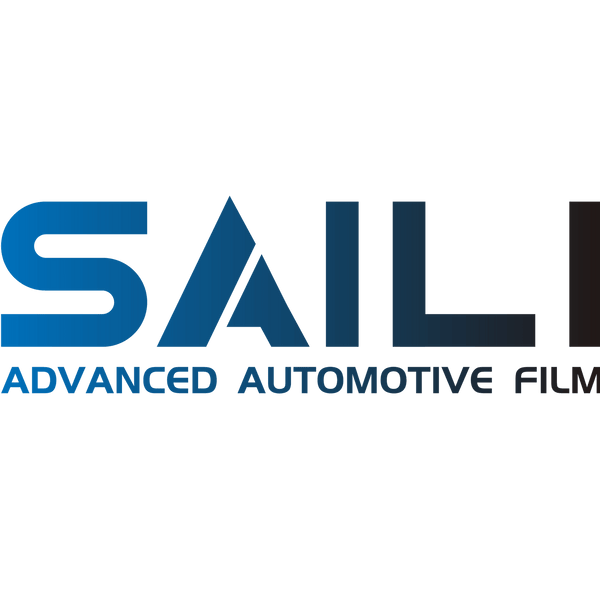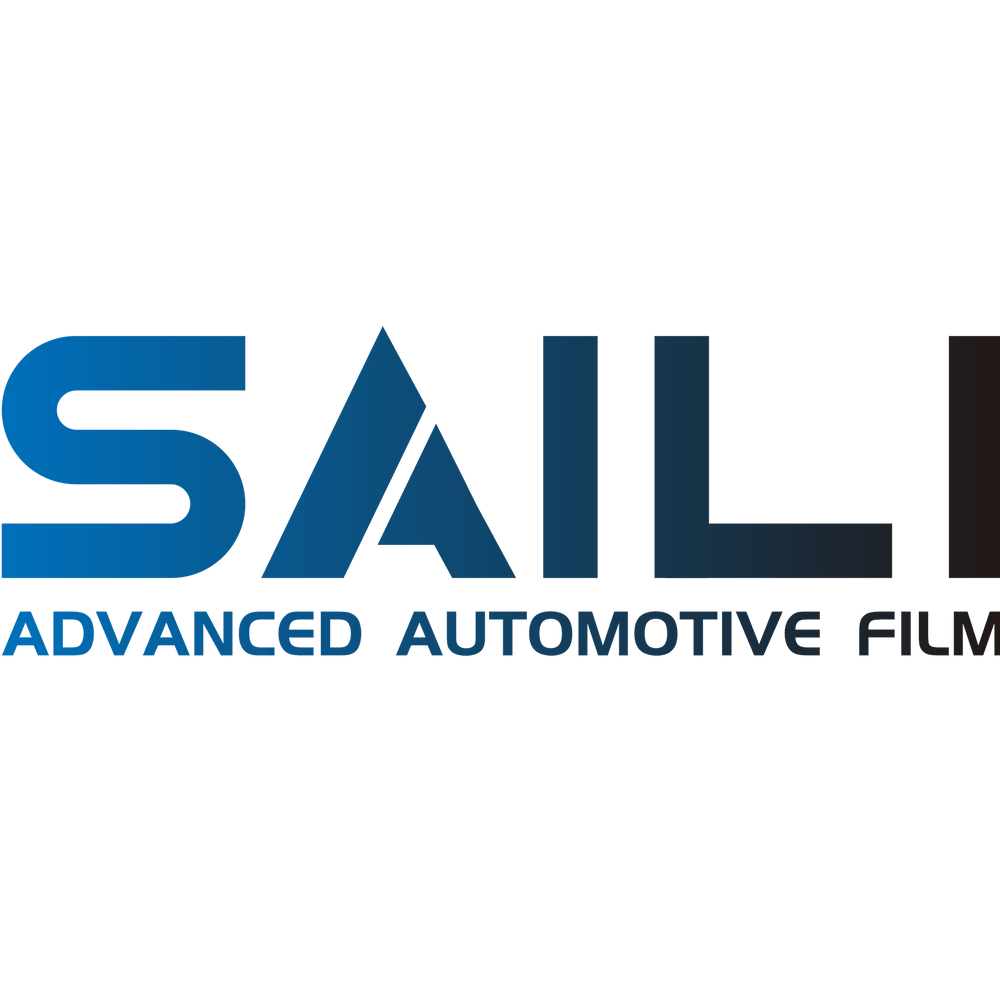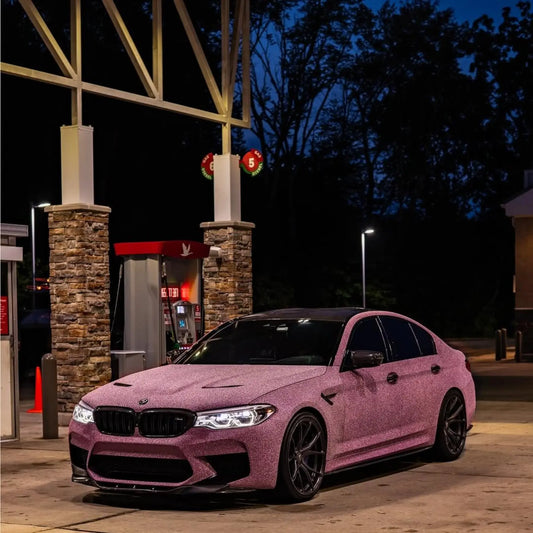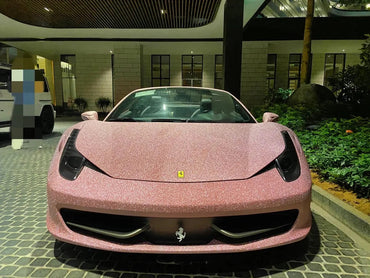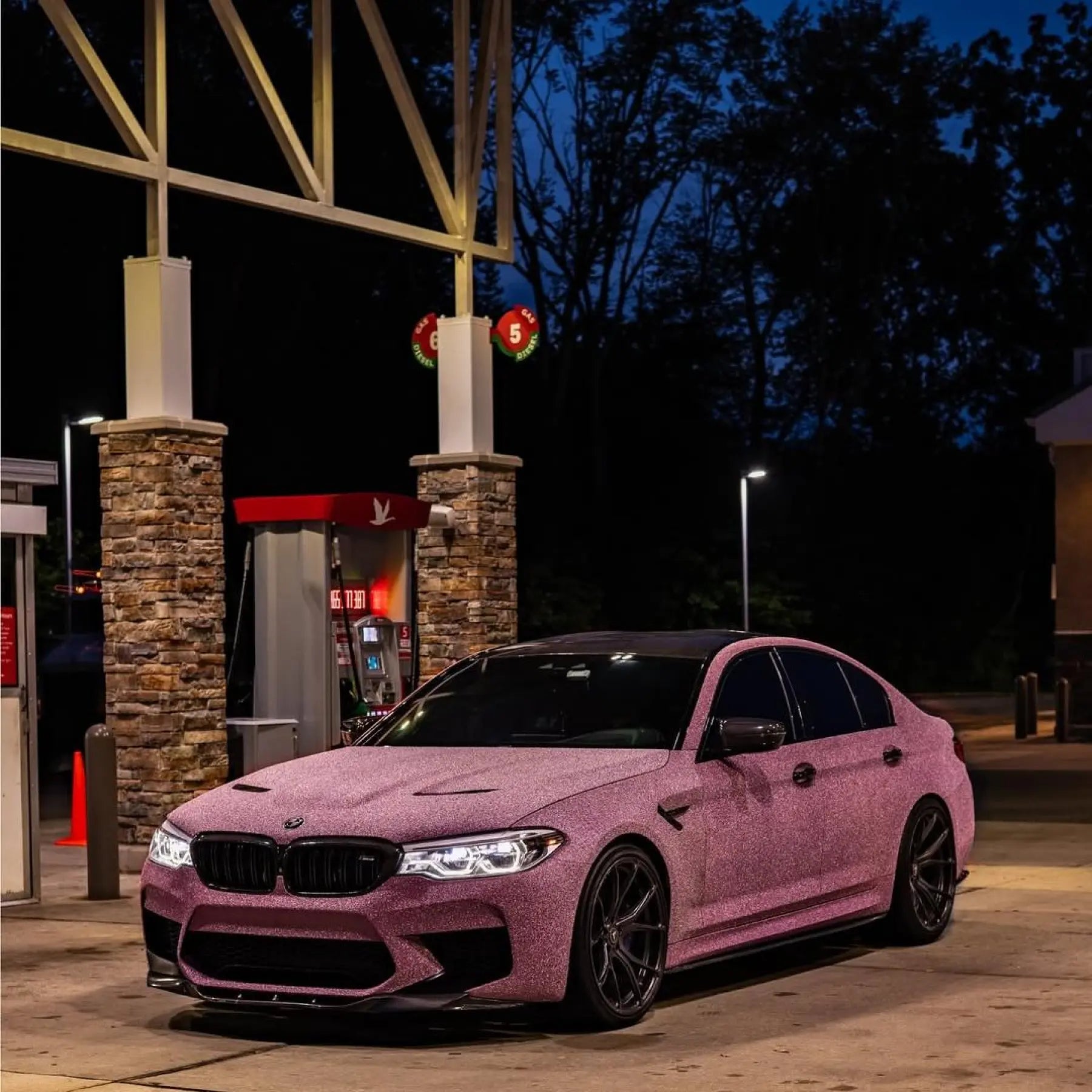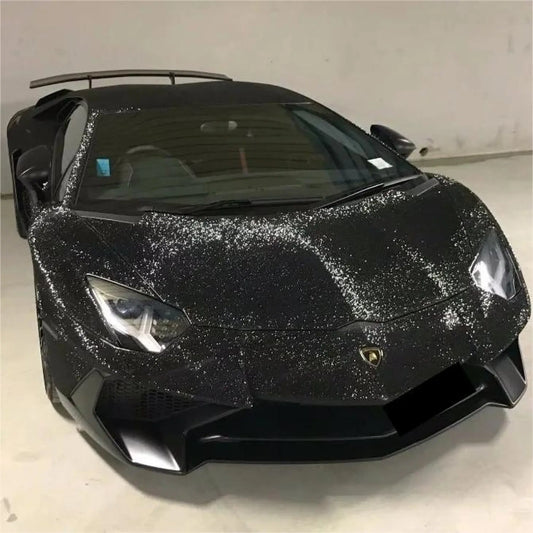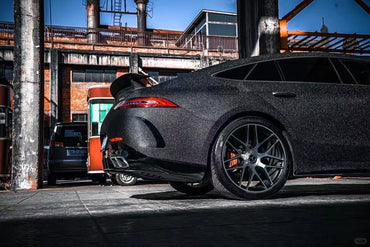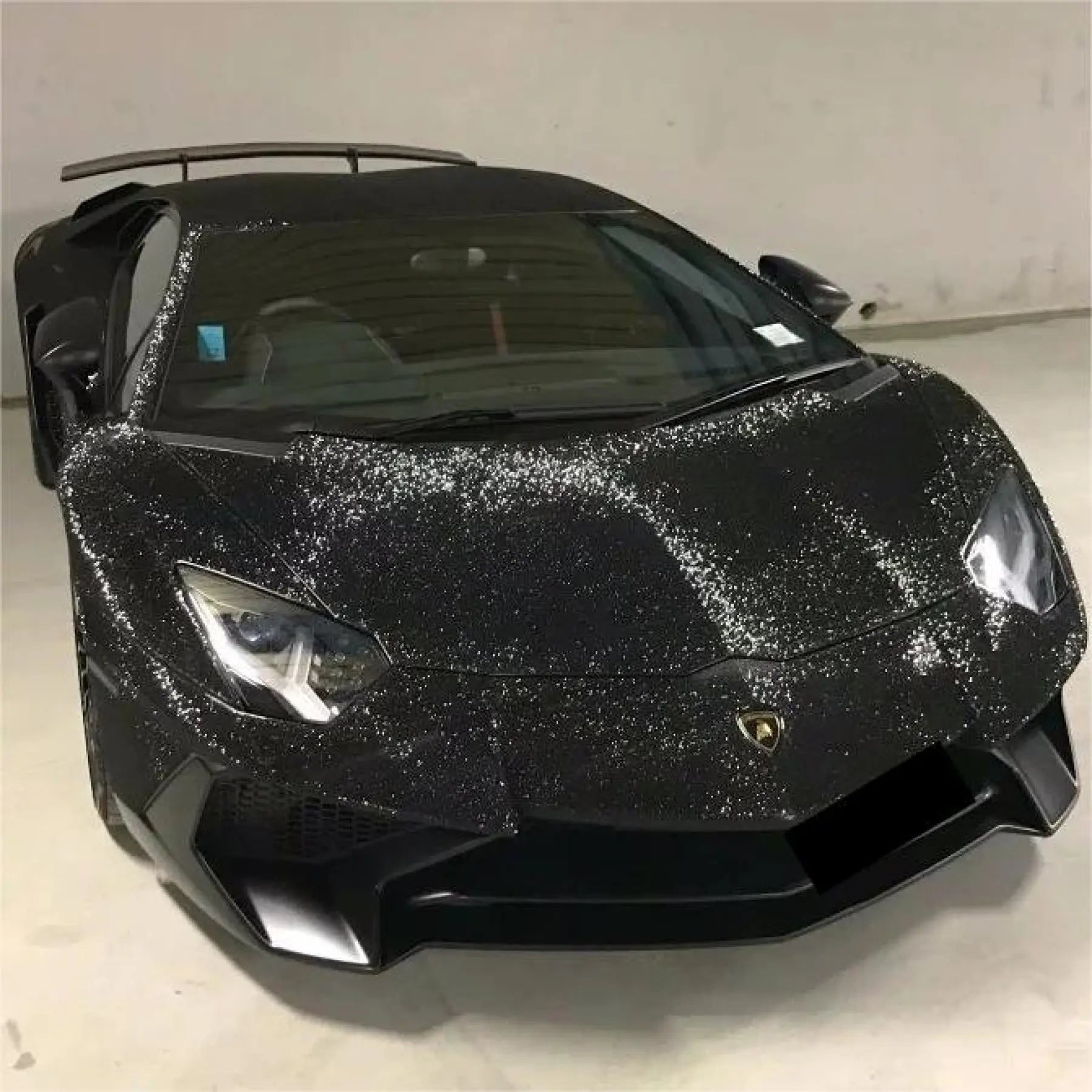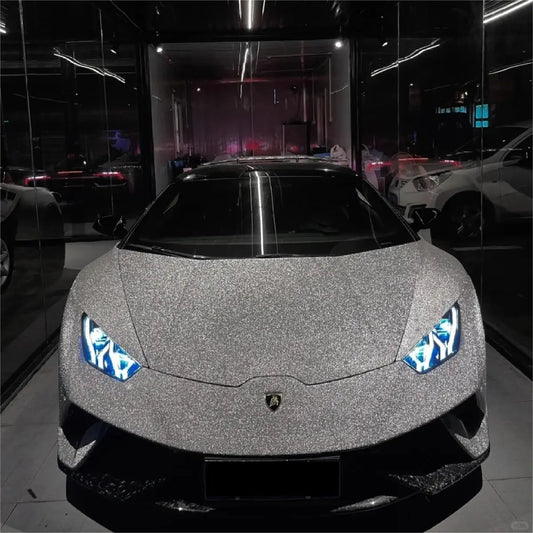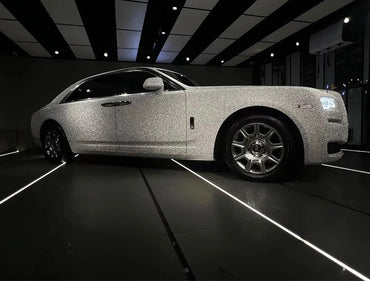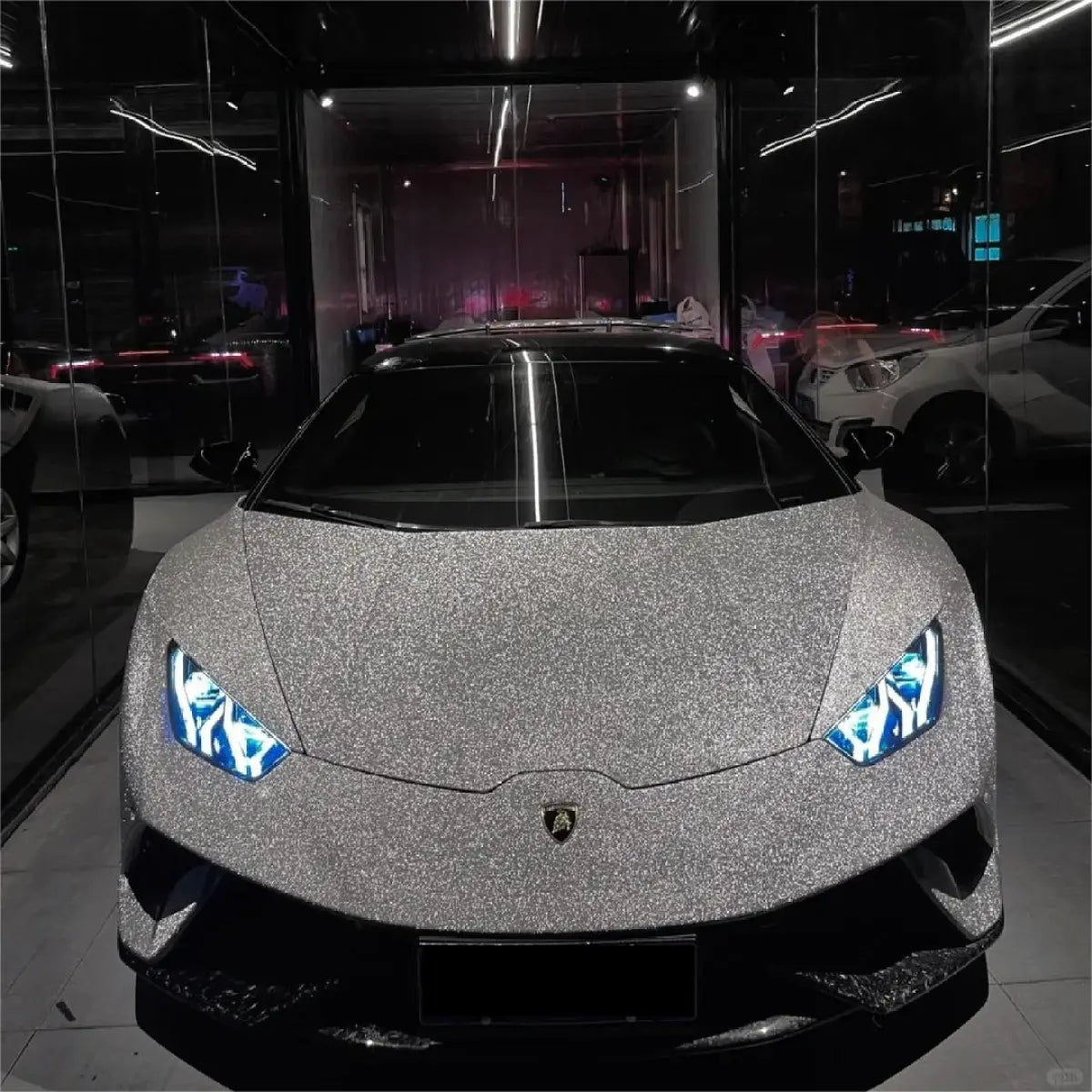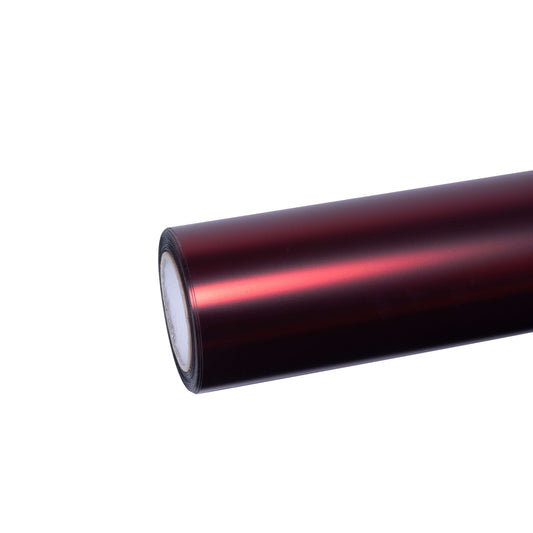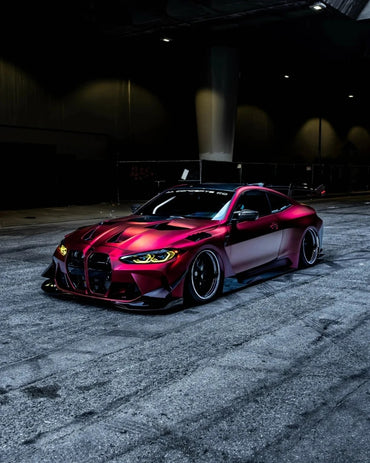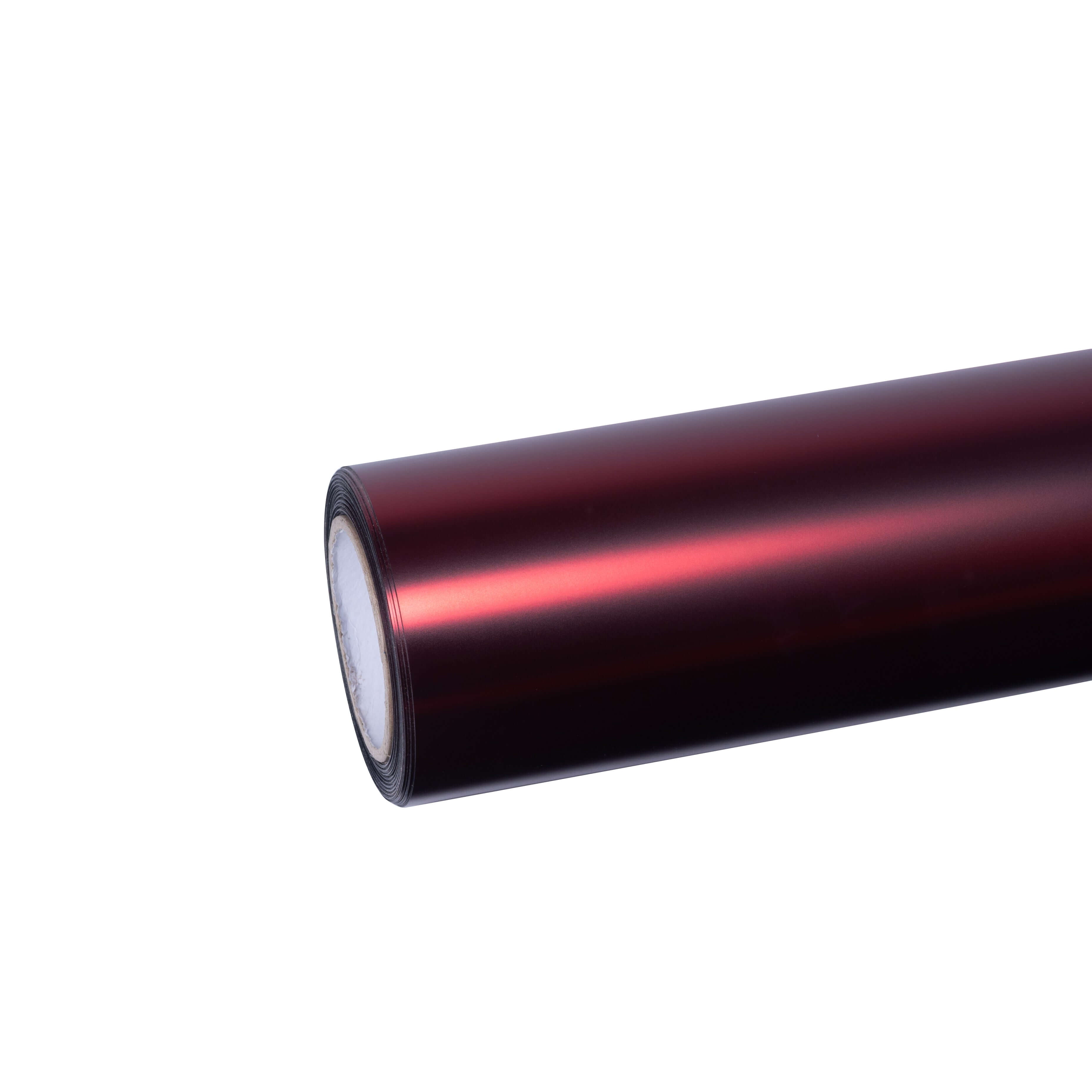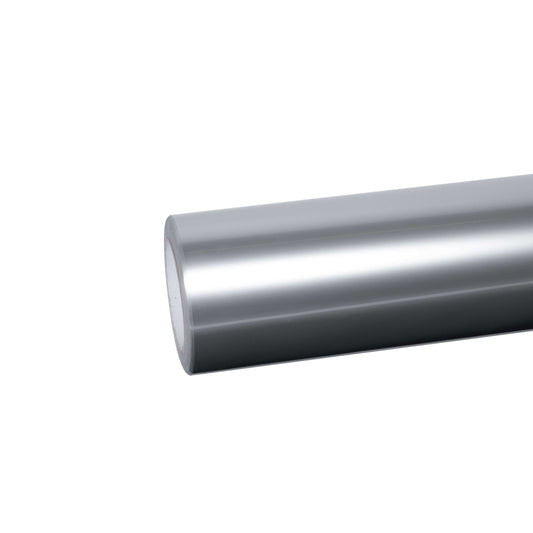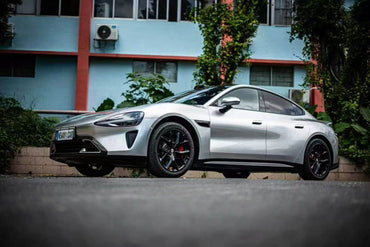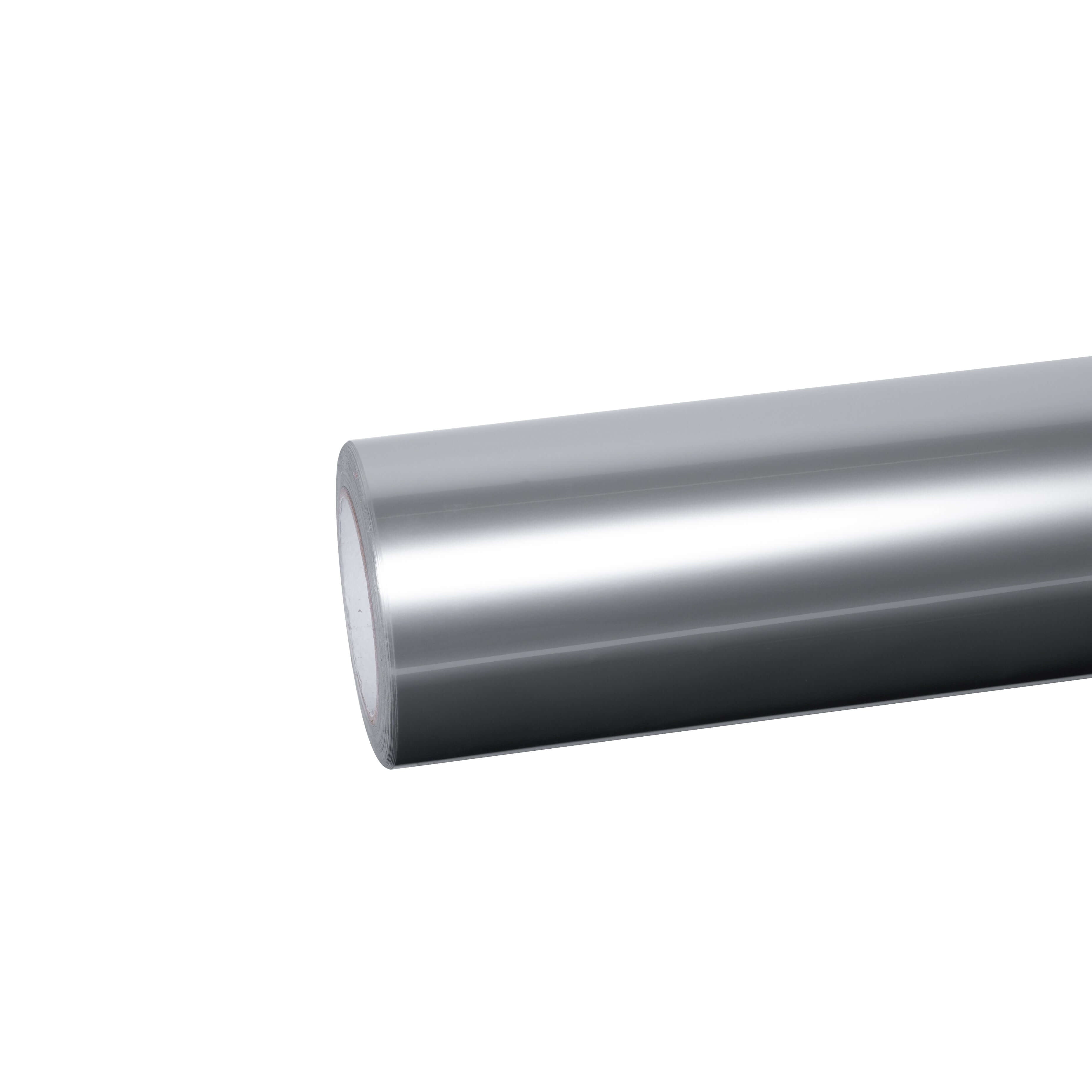Understanding the Commercial Vehicle Wrap Advantage
Before diving into design specifics, understanding the fundamental benefits of commercial vehicle wraps establishes why strategic design decisions matter significantly for business outcomes.
Exceptional Cost Per Impression Performance
Vehicle wraps deliver the lowest cost per thousand impressions among all advertising mediums. While digital advertising can cost upward of $21 per thousand impressions, fleet graphics achieve similar reach for approximately $0.15 per thousand impressions. This dramatic cost efficiency means a single wrapped vehicle working daily generates millions of brand impressions annually for a one-time investment.
Research demonstrates that mobile advertising through vehicle wraps produces nearly four times more online activations per advertising dollar compared to television, radio, and print media combined. Additionally, every dollar invested in vehicle wrap advertising typically generates approximately three dollars in sales revenue, exceeding the return rates of traditional advertising channels.
24/7 Brand Visibility Without Recurring Costs
Unlike billboard leases or digital advertising campaigns requiring ongoing payments, commercial vehicle wraps provide continuous marketing exposure throughout their entire lifespan. Quality wraps manufactured from premium materials maintain optimal appearance for five to seven years with proper maintenance, delivering years of constant brand promotion without additional expenditure.
Your vehicles advertise during commutes, at job sites, parked outside client locations, and throughout daily operations. This persistent visibility creates repeated brand exposure that builds recognition and trust within your target market.
Paint Protection and Asset Preservation
Beyond marketing benefits, professional-grade vinyl wraps protect vehicle paint from UV radiation, minor scratches, road debris, and environmental contaminants. Sailifilm's TPU paint protection wrap collection offers advanced protective properties combined with customization capabilities, preserving your fleet's resale value while displaying your brand identity.
Vehicles protected with quality wraps maintain superior exterior condition compared to unwrapped counterparts, reducing long-term maintenance costs and extending the useful life of your fleet assets.
Core Design Principles for Maximum Impact
Effective commercial vehicle wrap design balances multiple competing priorities: visual appeal, message clarity, brand consistency, and practical readability under real-world conditions. These fundamental principles guide successful fleet graphics development.
Embrace the Billboard Mentality
The single most important concept in commercial vehicle wrap design is treating each vehicle side as a moving billboard rather than a detailed brochure. Industry research confirms that viewers have approximately three to seven seconds to absorb your message while your vehicle passes or sits in traffic.
Design best practices recommend limiting each vehicle side to:
- Seven words or fewer for primary messaging
- Three visual elements maximum (logo, key graphic, contact information)
- One clear call to action directing viewers toward next steps
Overcrowded designs confuse viewers and dilute brand messages. Simplicity creates memorability and drives response rates. Focus on communicating who you are, what you do, and how prospects can contact you—nothing more.
Optimize Readability From Distance
Your message must remain legible from minimum distances of 50 feet to maximize impression opportunities. Consider that drivers maintaining safe following distances on highways typically remain 6-16 car lengths behind your vehicle, requiring large, bold typography that communicates clearly despite distance and motion.
Typography best practices for commercial vehicle wraps:
- Minimum letter height: 3-4 inches for primary text
- Font selection: Bold, sans-serif typefaces without decorative elements
- Letter spacing: Slightly increased spacing improves readability at distance
- Avoid: Script fonts, thin typefaces, all-caps long phrases, excessive italics
Test your design concepts at actual viewing distances before finalizing to ensure real-world legibility matches design intentions.
Create Powerful Color Contrast
Color selection dramatically impacts visibility and brand recognition. High-contrast color combinations ensure your message remains readable across diverse lighting conditions, weather situations, and background environments.
Effective contrast pairings include:
- Dark text on light backgrounds (black/navy on white/yellow)
- Light text on dark backgrounds (white/yellow on black/navy)
- Complementary color schemes creating visual separation
Avoid low-contrast combinations like light blue text on white backgrounds or dark purple on black surfaces. These pairings reduce legibility and undermine message effectiveness.
Sailifilm's extensive color collections including vibrant orange wraps, bold red wraps, professional blue wraps, and sophisticated grey wraps provide diverse options for creating high-impact contrast schemes that align with your brand identity.
Maintain Consistent Brand Identity
Fleet consistency builds trust and recognition. When multiple vehicles share uniform design elements, viewers perceive professionalism, reliability, and established business presence. Inconsistent fleet graphics suggest disorganization and undermine brand credibility.
Ensure consistency across:
- Logo placement and sizing across all vehicle types
- Color palettes matching exact brand specifications
- Typography choices using identical font families
- Design layouts maintaining recognizable structure
- Message hierarchy presenting information in consistent order
Develop comprehensive brand guidelines documenting exact specifications for vehicle graphics applications. This documentation ensures consistency when adding vehicles or working with different installation providers.
Strategic Layout and Design Placement
Thoughtful design placement maximizes visibility while accounting for vehicle architecture, viewing angles, and real-world usage patterns.
Maximize Every Surface Strategically
While full wraps deliver maximum impact, strategic partial wraps can achieve excellent results at reduced costs. Prioritize high-visibility areas based on typical viewing angles:
Driver and Passenger Sides: Most visible surfaces requiring comprehensive branding including logo, company name, and contact information. These sides receive maximum exposure during street parking and traffic situations.
Rear Doors/Tailgate: Critical real estate for vehicles frequently followed in traffic. Include bold branding, taglines, and prominent contact information. Many businesses achieve excellent results with rear-focused partial wraps emphasizing this high-value area.
Hood: Visible from elevated positions (pedestrian bridges, tall vehicles) and during parking. Consider adding simplified branding elements if budget allows.
Roof: Increasingly valuable in urban environments with tall buildings and aerial perspectives from drones and helicopters. Appropriate for businesses targeting commercial property managers or operating in dense metropolitan areas.
Include your most important information—logo, company name, and contact details—on every major surface. Viewers typically observe only one vehicle side, so comprehensive information on each surface prevents missed opportunities.
Account for Vehicle Architecture
Modern vehicles feature complex surface contours, panel separations, door handles, mirrors, and other architectural elements requiring thoughtful design accommodation.
Best practices include:
- Design around interruptions: Position critical text and logos away from door handles, fuel caps, and molding
- Embrace panel breaks: Use vehicle architecture to create natural design separations rather than fighting against it
- Plan for curves: Account for surface curvature affecting text appearance and graphic proportions
- Consider windows: Integrate window areas into overall design flow rather than treating them as limitations
Work with experienced designers familiar with vehicle templates to visualize how designs conform to actual vehicle surfaces before production.
Integrate Window Graphics Thoughtfully
Window graphics expand usable design space while maintaining driver visibility through perforated vinyl films. These graphics appear solid from outside while allowing interior visibility through micro-perforations.
Window graphic applications:
- Extend design elements across rear windows for cohesive appearance
- Display additional information impossible to fit on primary surfaces
- Create dramatic full-vehicle coverage maximizing visual impact
- Maintain professional appearance with consistent design treatment
Ensure window graphics comply with local regulations regarding visibility requirements and driver sight lines. Some jurisdictions restrict window coverage percentages or specific window locations.
Color Psychology and Selection Strategy
Color choices influence viewer perception, emotional response, and brand associations. Strategic color selection enhances message impact while aligning with business positioning.
Industry-Appropriate Color Choices
Different industries benefit from specific color associations:
Professional Services (Legal, Financial, Consulting): Conservative colors like navy, charcoal grey, and burgundy convey authority, trustworthiness, and expertise. Sailifilm's grey wraps and black wraps collections provide sophisticated options for professional branding.
Creative Industries (Marketing, Design, Media): Bold, vibrant colors demonstrate creativity and innovation. Consider unique finishes like rainbow laser vinyl wrap or dual color dream vinyl wrap creating memorable differentiation.
Home Services (Plumbing, HVAC, Electrical): Bright, high-visibility colors ensure easy identification in residential areas. Orange wraps, yellow wraps, and bright blue wraps attract attention while projecting approachability.
Luxury Services (High-End Retail, Premium Construction): Metallic finishes convey quality and sophistication. Sailifilm's metallic vinyl wrap and liquid chrome wrap collections deliver premium aesthetics matching upscale brand positioning.
Food Services (Catering, Mobile Food): Appetite-stimulating colors like red, orange, and warm yellows create positive associations. Bold color combinations attract attention in competitive street environments.
Trending Color Approaches for 2025
Commercial vehicle design trends in 2025 emphasize several distinct color strategies:
Bold Minimalism: Single dominant colors with minimal accent colors create clean, modern aesthetics that communicate confidence and clarity. This approach works particularly well with ultra-matte wrap finishes providing contemporary sophistication.
Strategic Color Blocking: Large geometric color sections create visual interest while maintaining simplicity. This technique allows incorporation of multiple brand colors without overwhelming viewers.
Subtle Metallic Accents: Matte base colors enhanced with metallic or chrome trim elements add premium feel without excessive flash. This balanced approach suits businesses seeking professional appearance with contemporary edge.
Finish Selection: Gloss, Matte, and Specialty Options
Beyond color selection, finish choices significantly impact overall aesthetic and brand perception:
Gloss Finishes: Traditional glossy wraps deliver vibrant color saturation and mirror-like reflectivity. These finishes maximize color intensity and create eye-catching visual impact. Gloss wraps suit businesses seeking bold, energetic brand presence.
Matte Finishes: Increasingly popular for commercial applications, matte finishes provide sophisticated, contemporary aesthetics. The non-reflective surface creates elegant appearance while effectively concealing minor surface imperfections. Matte wraps work exceptionally well for premium service providers and creative businesses.
Satin Finishes: Bridging gloss and matte characteristics, satin finishes offer subtle sheen without full reflectivity. This versatile option suits diverse business types seeking balanced visual appeal.
Specialty Finishes: Carbon fiber patterns, brushed metal textures, and other specialty finishes available through Sailifilm's 3D carbon fiber wrap collection create unique differentiation appropriate for automotive services, performance brands, and tech companies.
Typography and Messaging Best Practices
Text elements communicate essential information while contributing to overall visual impact. Strategic typography choices ensure message clarity and brand consistency.
Font Selection Guidelines
Choose fonts prioritizing legibility over decorative appeal:
Primary Text (Company Name, Tagline): Bold sans-serif fonts with substantial weight ensure visibility. Avoid condensed fonts appearing thin from distance.
Secondary Information (Services, Contact Details): Slightly lighter weights remain acceptable for supporting information, but maintain sufficient contrast and sizing.
Avoid: Script fonts, decorative typefaces, extremely thin fonts, highly stylized letters sacrificing readability.
Popular commercial vehicle font families include Helvetica Bold, Futura Heavy, Gotham Bold, and similar substantial sans-serif options providing excellent distance legibility.
Message Hierarchy and Information Architecture
Organize information following natural viewing patterns and importance levels:
Primary Level (Largest, Most Prominent):
- Company name/brand
- Core service description (2-4 words maximum)
- Primary visual identifier (logo)
Secondary Level (Medium Sizing):
- Tagline or key differentiator
- Phone number
- Website URL
Tertiary Level (Smallest, Supporting):
- Additional services list
- Social media handles
- Licensing numbers or certifications
Resist temptation to include excessive information. Every additional element reduces impact of primary message. Focus on essentials driving customer action.
Contact Information Strategy
Include two convenient contact methods on each vehicle side, balancing accessibility with design clarity:
Essential Contact Elements:
- Phone Number: Large, prominent display using clear numerals. Many viewers prefer immediate phone contact over digital options.
- Website URL: Keep URLs short and memorable. Avoid complex subdomains or lengthy domain names. Consider custom landing pages for vehicle-specific tracking.
Optional Additions:
- Email address (if short and professional)
- Social media handles (if central to marketing strategy)
- QR codes (controversial due to distracted driving concerns)
Avoid including street addresses unless operating retail locations where customers visit. Addresses consume valuable space better utilized for compelling imagery or messaging.
Advanced Design Techniques and Trends
Modern vehicle wrap design incorporates innovative techniques creating memorable visual experiences while maintaining functional effectiveness.
Geometric and Abstract Patterns
Contemporary commercial design embraces geometric shapes and abstract patterns creating modern, artistic aesthetics. These approaches work particularly well for:
- Technology companies projecting innovation
- Construction firms demonstrating precision
- Design agencies showcasing creativity
- Modern service providers differentiating from traditional competitors
Geometric patterns provide visual interest without overwhelming core messaging. Strategic pattern placement creates dynamic backgrounds supporting text elements while maintaining professional appearance.
Gradient Transitions and Color Shifting
Gradient effects transitioning smoothly between colors generate eye-catching visual movement. These techniques attract attention in traffic while demonstrating design sophistication.
Applications include:
- Background gradients supporting text elements
- Accent bars creating visual flow across vehicle surfaces
- Logo treatments adding dimension and depth
Color-shifting specialty films like Sailifilm's rainbow laser vinyl wrap create dynamic effects changing appearance based on viewing angle and lighting conditions. While more dramatic than standard commercial applications, these finishes suit businesses targeting younger demographics or creative industries.
Textured and Three-Dimensional Effects
Advanced printing and film technologies enable realistic texture simulation:
- Carbon fiber patterns for automotive and performance businesses
- Brushed metal effects for industrial and manufacturing companies
- Wood grain finishes for furniture and construction firms
- Leather textures for luxury service providers
These textured approaches available through specialty wrap collections add tactile visual interest distinguishing your fleet from standard flat designs.
Strategic Negative Space Utilization
Sophisticated designs leverage negative space (empty areas) creating visual breathing room that enhances rather than detracts from messaging. White space around text improves readability while projecting confidence and premium positioning.
Resist urge to fill every surface inch with information or imagery. Strategic emptiness creates elegance and ensures primary elements receive proper emphasis.
Material Selection for Commercial Applications
Choosing appropriate wrap materials significantly impacts longevity, maintenance requirements, and total cost of ownership.
Standard Vinyl Wraps for Fleet Graphics
Traditional vinyl wraps from Sailifilm's car vinyl wrap collection provide excellent balance of cost, versatility, and performance for most commercial applications. These calendared and cast vinyl films offer:
Advantages:
- Wide color selection matching any brand palette
- Cost-effective for large fleet deployments
- 3-5 year lifespan with proper maintenance
- Easy replacement when rebranding or updating messaging
Ideal Applications:
- Standard fleet vehicles with regular replacement cycles
- Businesses changing messaging seasonally
- Companies testing vehicle advertising before full commitment
- Budget-conscious small business deployments
Premium TPU Paint Protection Film
For businesses prioritizing long-term durability and paint preservation alongside branding, Sailifilm's colored paint protection film combines protective performance with aesthetic customization.
Advantages:
- 7-10 year lifespan exceeding standard vinyl
- Self-healing properties eliminating minor scratches
- Superior UV resistance preventing fading
- Comprehensive paint protection preserving vehicle value
Ideal Applications:
- Premium service providers (luxury brands, executive services)
- Long-term fleet vehicles (specialized equipment, company cars)
- High-value vehicle protection (luxury sedans, premium vans)
- Businesses emphasizing quality and longevity
Finish Combinations and Layering
Advanced installations combine multiple material types creating unique visual effects:
- Matte base wraps with gloss or chrome accent elements
- Color PPF foundations with vinyl graphic overlays
- Textured backgrounds with smooth text applications
These sophisticated approaches deliver premium differentiation justifying higher investment for businesses targeting discerning clientele.
Installation Quality and Professional Partnership
Even exceptional designs fail without proper installation. Professional installation ensures optimal appearance, longevity, and return on investment.
Selecting Qualified Installation Providers
Seek installation partners demonstrating:
- Manufacturer certifications from major vinyl producers
- Portfolio documentation showing diverse vehicle types
- Warranty offerings guaranteeing installation quality
- Climate-controlled facilities ensuring optimal application conditions
- Experience with your vehicle types (cargo vans, box trucks, trailers, etc.)
Request references from previous commercial clients and inspect completed installations before committing.
Pre-Installation Vehicle Preparation
Proper surface preparation prevents installation failures:
- Thorough cleaning removing all contaminants, wax, and residue
- Paint condition assessment identifying areas requiring repair
- Surface decontamination using specialized chemicals eliminating oils
- Panel inspection documenting existing damage before wrap application
Professional installers perform comprehensive preparation as standard procedure. DIY installations require meticulous attention to these critical steps.
Quality Installation Indicators
Professional installations exhibit:
- Seamless edges with proper wrapping around panels
- Bubble-free surfaces with complete adhesion
- Aligned graphics matching vehicle architecture
- Clean cuts around handles, mirrors, and trim
- Proper tension without excessive stretching distorting graphics
Post-installation, inspect vehicles thoroughly in various lighting conditions before accepting delivery.
Maintenance and Longevity Optimization
Proper maintenance extends wrap lifespan and preserves visual impact throughout the investment period.
Regular Cleaning Protocols
Establish consistent cleaning schedules:
- Frequency: Wash fleet vehicles every two weeks minimum
- Method: Hand washing with pH-neutral soap and soft microfiber materials preferred
- Automated car washes: Use only soft-touch facilities; avoid brush systems damaging wrap edges
- Pressure washing: Acceptable if maintaining proper distance and angle; avoid direct high-pressure spray on edges
Contaminant Management
Address problematic substances immediately:
- Bird droppings and tree sap: Remove within 24-48 hours preventing staining
- Fuel spills: Clean promptly using approved cleaners; petroleum products degrade vinyl adhesives
- Industrial fallout: Address chemical contaminants quickly in industrial environments
Delayed cleaning allows contaminants to bond with wrap surfaces, creating permanent damage requiring panel replacement.
Storage and Environmental Considerations
Whenever possible:
- Park vehicles in covered or shaded locations reducing UV exposure
- Avoid prolonged parking beneath trees dropping sap or fruit
- Consider garage storage for high-value wrapped vehicles during off-seasons
- Address any edge lifting or peeling immediately preventing water intrusion
Warranty Coverage and Damage Response
Quality wrap materials include manufacturer warranties covering:
- Premature fading under normal conditions
- Adhesive failure on properly prepared surfaces
- Film delamination or cracking
Installation providers typically warranty their workmanship separately. Understand coverage parameters and required maintenance procedures to preserve warranty validity.
Address minor damage immediately. Small lifting edges or scratches expand rapidly if ignored, while prompt repairs maintain professional appearance and prevent accelerated deterioration.
Measuring and Optimizing ROI
Track vehicle wrap performance to justify investment and refine strategy over time.
Establishing Tracking Mechanisms
Implement methods quantifying wrap effectiveness:
Dedicated Phone Numbers: Assign unique phone numbers exclusively used on vehicle graphics. Call tracking reveals impression-to-inquiry conversion rates and geographic response patterns.
Custom Landing Pages: Create vehicle-specific website URLs (company.com/fleet or company.com/mobile) tracking visitor sources. Monitor traffic and conversion from these dedicated pages.
Promotional Codes: Offer special discounts or codes mentioned only on vehicle wraps. Redemption tracking measures direct response and customer acquisition cost.
CRM Source Tracking: Train sales staff to ask new customers how they discovered your business. Systematically record "saw vehicle" responses quantifying awareness building.
Key Performance Indicators
Monitor these metrics evaluating fleet wrap performance:
- Daily impression estimates based on vehicle routes and traffic patterns
- Inquiry volume from tracking phone numbers and landing pages
- Conversion rates from inquiries to customers
- Customer acquisition cost comparing vehicle wrap investment to customer lifetime value
- Brand awareness surveys measuring recognition in service areas
Geographic Route Optimization
GPS tracking data reveals high-traffic routes and areas generating maximum impressions. Optimize vehicle deployment:
- Schedule high-visibility routes during peak traffic periods
- Concentrate wrapped vehicles in target demographic neighborhoods
- Time job scheduling to increase exposure in priority territories
- Evaluate parking locations for maximum stationary visibility
Competitive Analysis and Market Positioning
Assess competitor fleet graphics within your market:
- Photograph competitor vehicles analyzing design approaches
- Identify messaging gaps or opportunities for differentiation
- Evaluate visibility and memorability of competitive designs
- Determine saturation levels in your service category
This intelligence informs design refinement and strategic positioning decisions.
Scaling Fleet Wrap Programs
Growing businesses require systematic approaches to fleet graphic expansion maintaining consistency and managing costs.
Phased Implementation Strategies
Startup Approach (1-2 Vehicles): Begin with highest-visibility vehicles establishing brand presence and testing design effectiveness. Monitor response before expanding investment.
Growth Phase (3-10 Vehicles): Expand to additional vehicles as tracking confirms positive ROI. Negotiate volume pricing with design and installation partners. Standardize designs across vehicle types.
Fleet Maturity (10+ Vehicles): Implement comprehensive fleet graphics programs with established vendors, standardized designs, and systematic maintenance protocols. Consider dedicated fleet management software tracking wrap lifecycles and maintenance schedules.
Budget Allocation Models
Per-Vehicle Investment:
- Basic vinyl partial wrap: $1,500-$2,500
- Full vinyl wrap: $2,500-$4,500
- Premium TPU full wrap: $4,000-$7,000
- Specialty finishes: Premium of 20-50% above standard pricing
Annual Fleet Budget: Allocate 3-7% of vehicle acquisition costs to graphics programs ensuring consistent branding across expanding fleets.
Design Iteration and Refresh Cycles
Plan systematic design updates:
- Minor refreshes (2-3 years): Update contact information, add new services, refresh color accents
- Major redesigns (5-7 years): Comprehensive rebrand aligning with evolving business positioning
- Opportunistic updates: Leverage scheduled wrap replacements to implement refinements
Maintain design archives documenting evolution and ensuring consistency during partial fleet updates.
Industry-Specific Considerations
Different business categories require tailored approaches maximizing category-specific advantages.
Service Contractors (Plumbing, HVAC, Electrical)
Emphasize:
- 24/7 emergency availability prominently displayed
- License and certification numbers building credibility
- Service area coverage (cities, counties served)
- High-visibility colors ensuring easy identification in residential neighborhoods
- Before/after imagery demonstrating transformation capabilities
Delivery and Logistics Services
Prioritize:
- Service speed messaging ("Same-Day Delivery," "On-Time Guaranteed")
- Coverage area maps showing geographic reach
- Package tracking information directing customers to systems
- Professional fleet uniformity building trust in handling capabilities
Food Services and Catering
Highlight:
- Appetizing food photography creating desire and interest
- Menu highlights featuring signature offerings
- Event capability messaging for catering operations
- Hygiene and certification indicators building food safety confidence
- Vibrant, appetite-stimulating colors attracting attention
Professional Services (Consulting, Legal, Financial)
Focus on:
- Sophisticated color palettes conveying professionalism
- Minimal, elegant designs projecting expertise
- Credential highlights (certifications, awards, experience)
- Conservative messaging building trust and credibility
Environmental and Sustainability Considerations
Eco-conscious businesses increasingly prioritize sustainable wrap solutions aligning with broader environmental commitments.
Sustainable Material Options
Modern wrap manufacturing increasingly incorporates environmental innovations:
- Non-PVC vinyl alternatives reducing environmental impact
- Biodegradable adhesive formulations
- Recyclable liner materials
- Low-VOC inks and printing processes
While sustainable options may carry premium pricing, they align with green business positioning and appeal to environmentally conscious customer segments.
Vehicle Efficiency Messaging
Companies operating fuel-efficient or electric vehicle fleets should prominently feature:
- Electric vehicle indicators creating positive associations
- Hybrid technology messaging demonstrating commitment
- Carbon-neutral operation claims (if applicable)
- Environmental certifications and memberships
This positioning differentiates environmentally responsible businesses from conventional competitors.
Future Trends and Emerging Technologies
The commercial vehicle wrap industry continues evolving with technological innovations creating new opportunities.
Interactive and Digital Integration
Emerging trends include:
- QR codes linking to digital content, though safety concerns limit adoption
- Augmented reality wraps enabling smartphone interactions revealing additional content
- NFC technology allowing tap-to-connect functionality for contact sharing
While adoption remains limited, technology-forward businesses may benefit from early implementation creating memorable differentiators.
Color-Changing and Dynamic Materials
Research developments explore:
- Thermochromic films changing color with temperature
- Photochromic materials responding to light exposure
- Potential electronic displays integrated into wrap surfaces
These technologies remain primarily experimental but suggest future possibilities for dynamic fleet graphics.
Conclusion: Building Your Commercial Wrap Strategy
Commercial vehicle wraps represent powerful marketing investments delivering exceptional return when designed and implemented strategically. Success requires balancing competing priorities: visual impact and readability, brand consistency and creative differentiation, comprehensive coverage and budget constraints.
The fundamental principles remain constant: treat vehicles as mobile billboards with clear, simple messaging; maximize readability through bold typography and high contrast; maintain fleet consistency building recognition and trust; choose quality materials appropriate for usage patterns and longevity requirements.
Sailifilm's comprehensive collections including professional vinyl wraps, advanced colored paint protection film, specialty finishes, and complete wrapping tools provide everything necessary for successful commercial fleet programs. Whether deploying a single wrapped vehicle or managing extensive fleet graphics programs, quality materials combined with strategic design create mobile marketing assets working continuously to build brand awareness, generate customer inquiries, and drive business growth.
Ready to transform your fleet into a powerful marketing asset? Explore Sailifilm's commercial-grade wrap materials and create vehicle graphics that command attention, communicate effectively, and deliver measurable business results.
